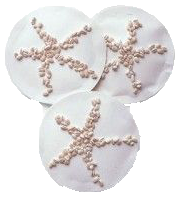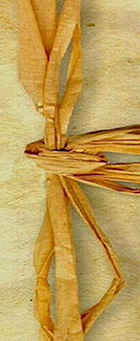Sand Dollar Facts
The sand dollars belong to Clypeasteroida order of Echinodermata family in Kingdom Animalia. The lifespan of a sand dollar ranges between eight to ten years. Its age can be determined by counting the growth rings on the plates of its exoskeleton.
Etymology

Sand dollars (written as sand-dollars at times) are also referred to as 'sand cakes' and 'cake urchins', owing to their peculiar shape. Their washed up tests, i.e., the hard outer covering of sea urchins, are often seen stranded on shores. Over the period, these tests turn white as a result of being continuously exposed to sunlight. This gives them an appearance which resembles the American dollar and thus, the common name.
Habitat
Sand dollars are found at the ocean floor, wherein the surface is sandy or muddy and facilitates easy penetration for these burrowing sea urchins. They are found below the low tide level at the depth of 5,000 ft - where sunlight penetration is minimal. These marine animals use the spines located on their body for burrowing in these sandy or muddy areas. The geographical distribution of sand dollar species is most often traced to the ocean floors of temperate and tropical zones.
Appearance
The fact that sand dollars generally tend to inhabit deep oceans means you are less likely to come across a live individual. If at all you do come across a live sand dollar, you will notice that these colorful creatures have a semi pliable shell - known as the test, covering their tiny bodies. Usually they are 2 to 4 inches in size and covered with many short spines. Beneath the shell lies the five sets of pores - a typical echinoderm characteristic, which helps these creatures to move around on the ocean floor.
Anatomy
As we mentioned above, sand dollars are typically characterized by their fivefold radial symmetry like various other echinoderms. Its secondary bilateral symmetry differentiates it from the other species, which are defined in marine biology. Even though their mouth is located on the underside, these creatures do not push their stomach out for feeding like starfish do. Instead, they use their tube feet (which are also located at the underside) to bring food to their mouth. Their mouth has teeth-like sections which are used to grind the food they feed on. Normally, it takes a sand dollar around two days to digest its food.
 Sand dollars (written as sand-dollars at times) are also referred to as 'sand cakes' and 'cake urchins', owing to their peculiar shape. Their washed up tests, i.e., the hard outer covering of sea urchins, are often seen stranded on shores. Over the period, these tests turn white as a result of being continuously exposed to sunlight. This gives them an appearance which resembles the American dollar and thus, the common name.
Sand dollars (written as sand-dollars at times) are also referred to as 'sand cakes' and 'cake urchins', owing to their peculiar shape. Their washed up tests, i.e., the hard outer covering of sea urchins, are often seen stranded on shores. Over the period, these tests turn white as a result of being continuously exposed to sunlight. This gives them an appearance which resembles the American dollar and thus, the common name.

